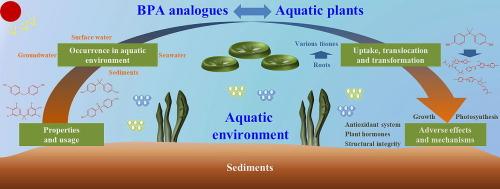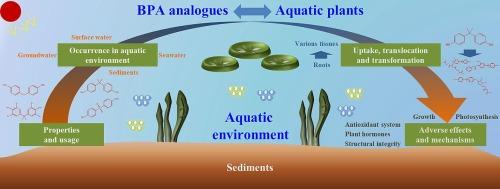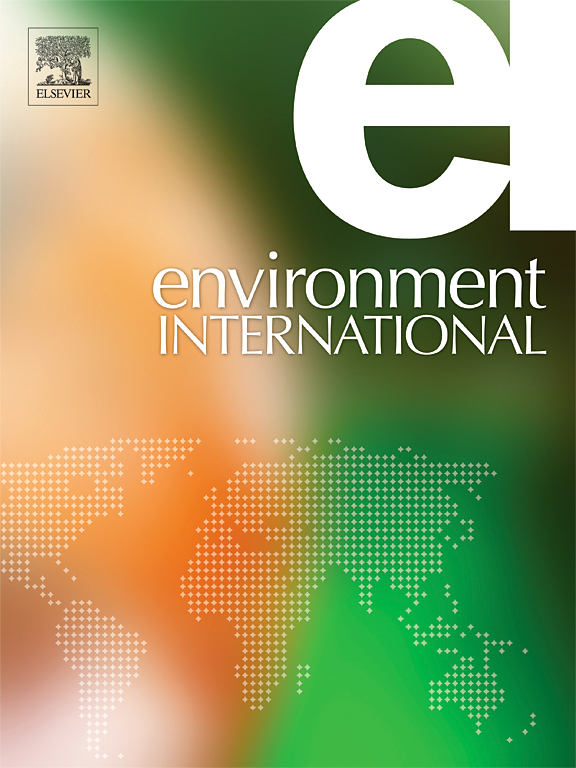水生环境中双酚 A 类似物的出现及其对植物的行为和毒性影响
IF 10.3
1区 环境科学与生态学
Q1 ENVIRONMENTAL SCIENCES
引用次数: 0
摘要
技术和经济的不断发展导致双酚 A 类似物(BPs)在产品中的广泛使用,导致其释放到水生环境中,对水生植物造成威胁。然而,很少有论文系统地综述了双酚 A 与水生植物之间的相互作用。本综述全面总结了 BPs 的特性、发生、归宿以及对水生植物的危害影响。全球水生环境中已广泛检测到 BPs,在地表水、地下水、海水和沉积物中的浓度范围一般从较低的 ng/L 或 ng/g 到较高的 μg/L 或 μg/g。水生植物能有效吸收和转移 BPs,并将其代谢为新的化合物。同时,暴露于 BPs 会对水生植物的生长、光合作用、抗氧化、植物激素和结构完整性产生不同的毒性影响。高通量组学检测提供了大量证据,显示了 BPs 如何干扰植物的基因转录、蛋白质和新陈代谢。这篇综述强调了需要进一步关注新出现的双酚 A 替代品的影响、联合处理、与环境相关剂量的长期接触以及摄入受污染植物带来的潜在危害。本文章由计算机程序翻译,如有差异,请以英文原文为准。


Occurrence of bisphenol A analogues in the aquatic environment and their behaviors and toxicity effects in plants
Continuous technological and economic development has led to the extensive use of bisphenol A analogues (BPs) in products, leading to their release to aquatic environments and posing threats to aquatic plants. However, few papers have systemically reviewed the interactions between BPs and aquatic plants. This review comprehensively summarizes the properties, occurrence, fate, and hazardous influences of BPs on aquatic plants. BPs have been widely detected in the global aquatic environment, with concentrations generally ranging from a lower range of ng/L or ng/g to an upper range of μg/L or μg/g in surface water, groundwater, seawater, and sediments. Aquatic plants effectively uptake and translocate BPs, and metabolize them into new compounds. Meanwhile, BPs exposures have diverse toxic effects on the growth, photosynthesis, antioxidant, phytohormones, and structural integrity of aquatic plants. High-throughput omics assays provide significant evidence showing how BPs disturb gene transcription, proteins, and metabolism in plants. This review highlights the need for increased attention on the effects of emerging BPA alternatives, joint treatment, long-term exposure with environmental relevant doses, and potential hazards posed by ingesting polluted plants.
求助全文
通过发布文献求助,成功后即可免费获取论文全文。
去求助
来源期刊

Environment International
环境科学-环境科学
CiteScore
21.90
自引率
3.40%
发文量
734
审稿时长
2.8 months
期刊介绍:
Environmental Health publishes manuscripts focusing on critical aspects of environmental and occupational medicine, including studies in toxicology and epidemiology, to illuminate the human health implications of exposure to environmental hazards. The journal adopts an open-access model and practices open peer review.
It caters to scientists and practitioners across all environmental science domains, directly or indirectly impacting human health and well-being. With a commitment to enhancing the prevention of environmentally-related health risks, Environmental Health serves as a public health journal for the community and scientists engaged in matters of public health significance concerning the environment.
 求助内容:
求助内容: 应助结果提醒方式:
应助结果提醒方式:


